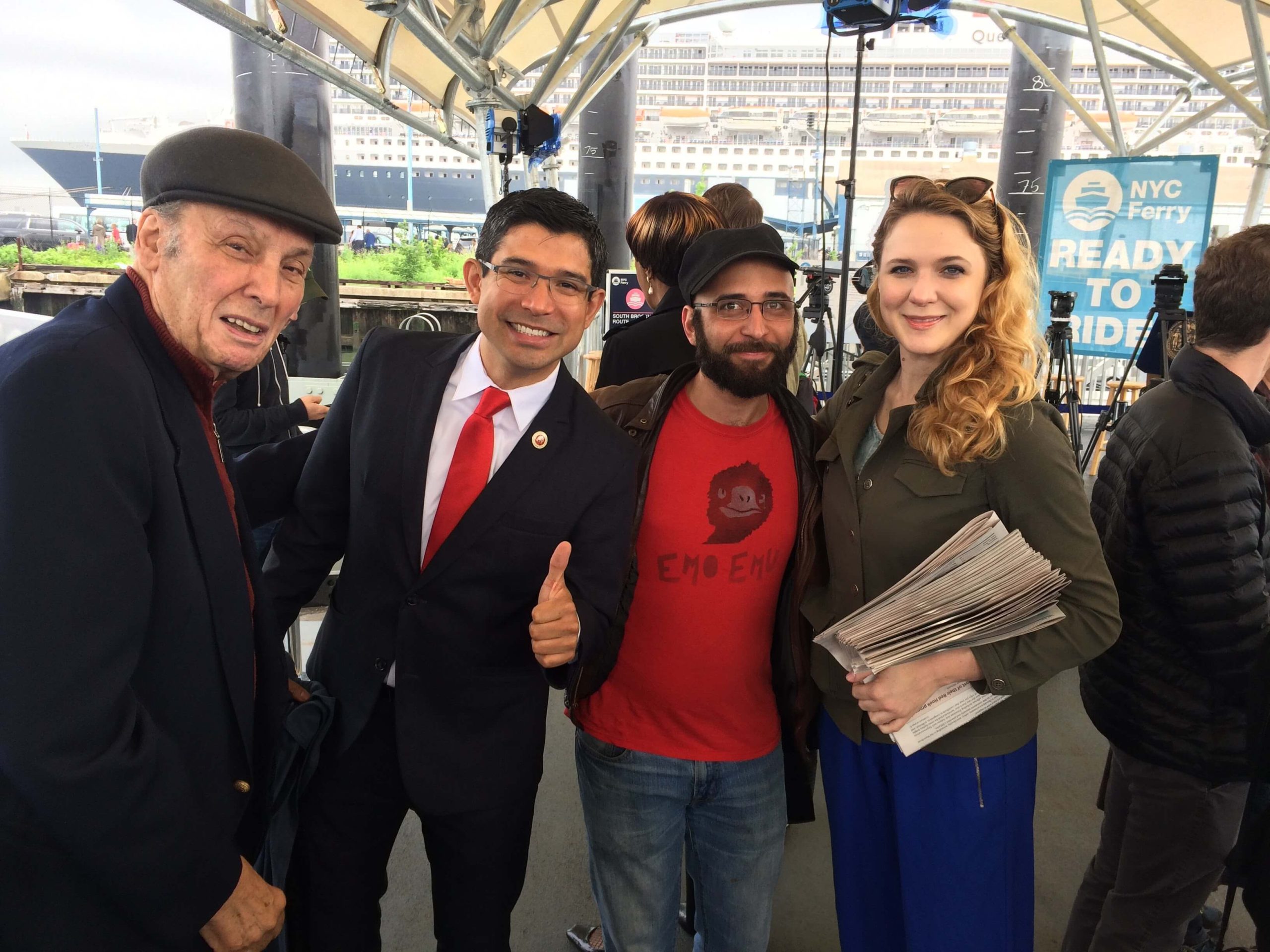On February 25, Council Member Carlos Menchaca blasted a Red Hook developer’s decision to avoid the City’s public review process to pursue a major rezoning. The following statement was delivered during a Brooklyn Community Board 6 meeting on the proposal:
“The developer first approached my office about their ‘Model Block’ concept over two years ago. At the time, the concept was pitched as a rezoning that would go through the City’s public review process.
“To my knowledge, the concept and rezoning proposal have not changed. The developer still hopes to double the allowed density on the site and add residential into an Industrial Business Zone.
“What has changed is the developer’s willingness to go through a public, transparent process.
Instead of ULURP, the developer now seeks these monumental changes through a variance application, which requires only the judgement of the Board of Standards and Appeals.
“ULURP is flawed and should be replaced. But it at least requires community participation and community oversight through each step of the process. It also allows the City Council to negotiate affordability in housing or make changes to the application.
“Going through the BSA deliberately circumvents that participation and oversight. “Choosing a process that deliberately avoids community input is inconsistent with the developer’s claims to care about the community at this meeting. “But beyond the failed process, I have other concerns about the BSA application itself:
“First, the application contradicts City policy without City oversight. The site sits in the Southwest Brooklyn Industrial Business Zone. The EDC says that IBZ’s are zones “under which the City guarantees not to support the rezoning of properties to allow residential uses.”
Yet despite wanting a variance to build housing in the IBZ, the applicant doesn’t mention this contradiction, instead claiming their proposal “support[s] the goals of the IBZ” because it will have some manufacturing. This omission raises concerns about their motives for seeking a variance rather than using ULURP.
“Second, despite its scale, this application is not subject to a rigorous environmental review. The application only includes a short Environmental Assessment, rather than a full Environmental Impact Statement. This limited assessment provides meager analysis of the impacts of this project on the health, safety, and livability of the surrounding neighborhood, and on the future of the Industrial Business Zone. Proposing a project of this scale in one of the most flood prone neighborhoods in New York City should involve a much more rigorous and transparent environmental review by the community.
“Third, is around accountability and enforcement. The proposal includes a promise to build deeply affordable housing. But if granted a variance, the BSA will not impose a requirement to build it. It is in effect a blank check to build housing, period. A rezoning through ULURP, by contrast, would at least impose MIH requirements and create a potential path for a Community Benefits Agreement.
Why should the community trust the applicant on their word alone?
“Fourth, I am skeptical of the application’s financial analysis. The developer claims that to de-pollute the site without losing money it needs to build housing. But from what I read, there is no explanation for why it would cost the same to remediate for manufacturing as opposed to residential use. One would assume that cleaning the site enough for people to live in would cost more, which would affect their profit margins. Perhaps there is a good reason for this, so I would like to know.
“In sum, this is an inappropriate use of the variance regulations. Variances are tools to provide limited relief. But this application asks the BSA to turn a low-density manufacturing zone into a high-density residential/mixed use zone in an IBZ that was expressly created to prohibit residential uses. With a less rigorous environmental review process. And with no way for the community to approve or challenge the proposal if affordable housing is not built.
Why does the applicant think any of this is appropriate, or should reassure their neighbors that their input matters?»
While this initial public hearing, a committee meeting of CB6, defeated this proposal by 12-0, the developer is still pursuing his plan.
If you agree with the above sentiments, you could send a copy of this article to Jela Prenga at the Board of Standards and Appeals, 22 Reade Street, New York, NY 10007,
or call them at (212) 386-0009.
Or you could send your own thoughts either pro or con.
The public hearing at the BSA is not yet scheduled but will be soon. As soon as we know we will post it.










